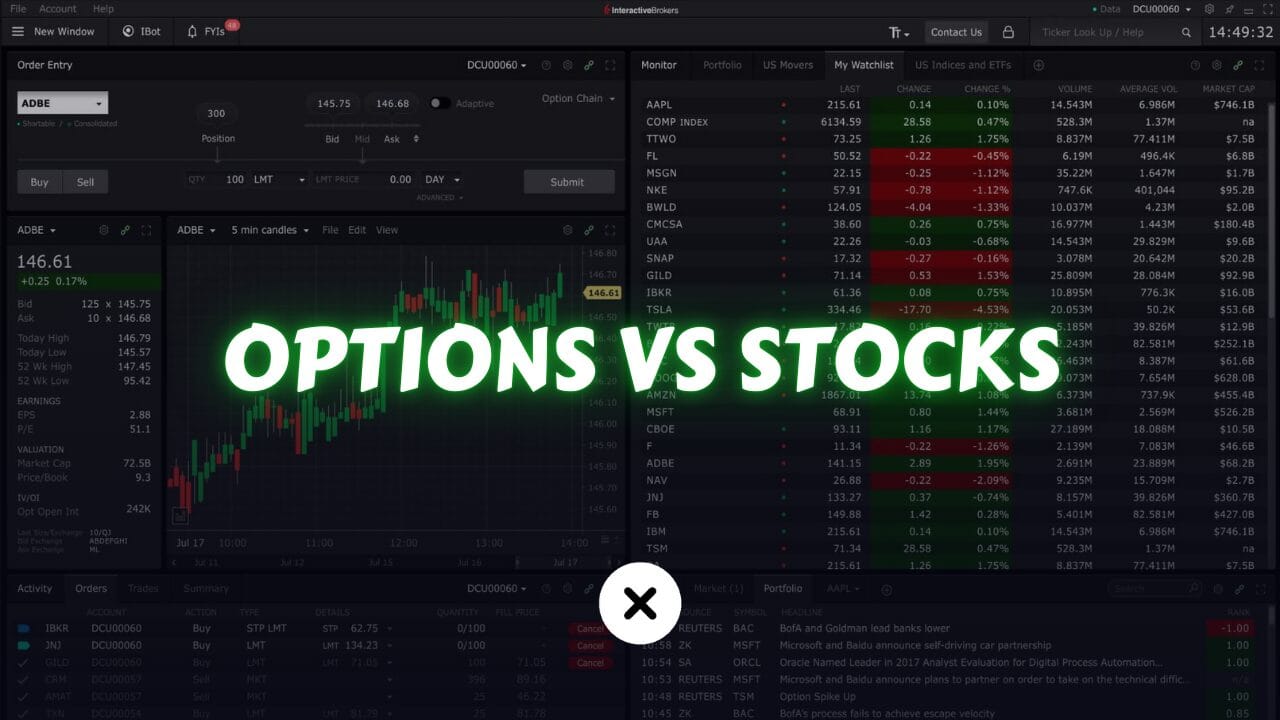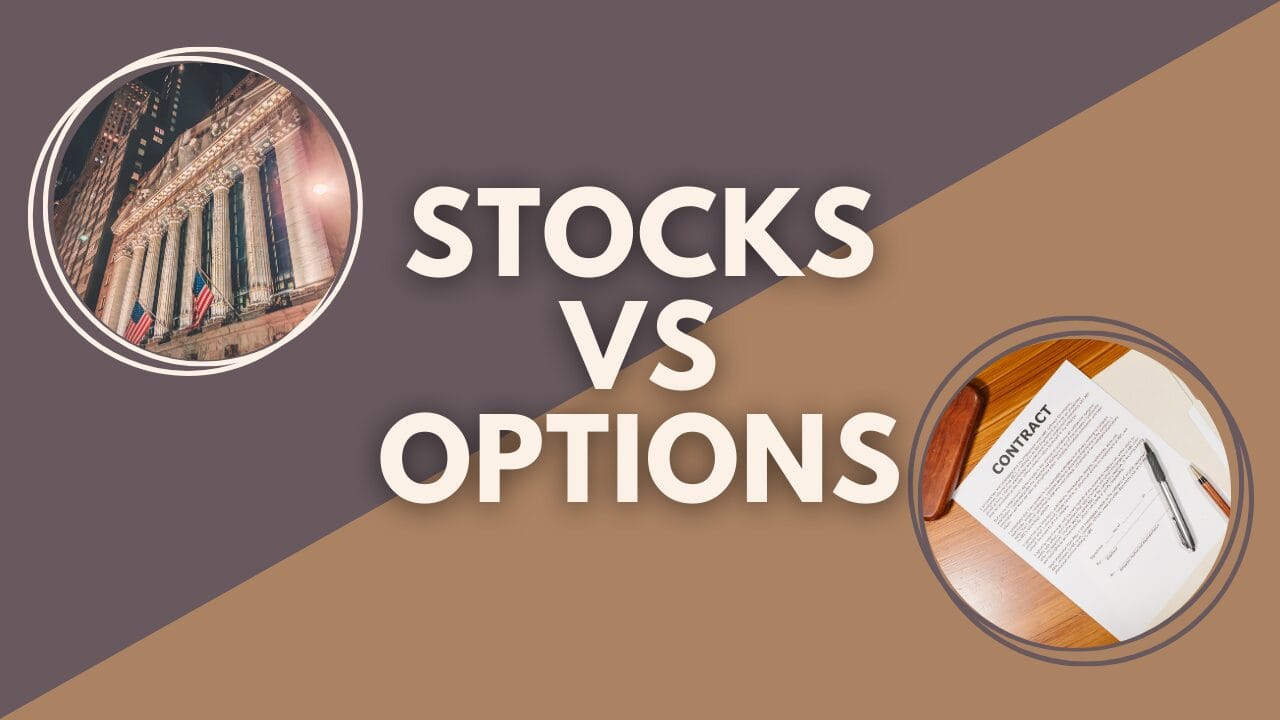
Investing is like navigating a financial labyrinth—knowing the tools at your disposal can make all the difference in finding your way to success. Among the most talked-about investment vehicles are stocks and options. While both can potentially grow your wealth, they differ profoundly in how they work, their risks, and the strategies needed to master them. Let’s dive into the intricacies of options vs stocks, providing you with a well-rounded understanding of their unique characteristics, benefits, and pitfalls. By the end, you’ll know how to align these tools with your investment goals.
The Foundation: What Are Stocks?

Think of stocks as tiny slices of a company. When you purchase a share of a company’s stock, you’re essentially buying a piece of ownership. This ownership often comes with perks, such as voting rights at shareholder meetings and the potential to earn dividends if the company shares its profits. Stocks have historically been considered the backbone of long-term investing due to their ability to appreciate in value over time.
For instance, imagine you buy 100 shares of a tech company for $50 each. If the company innovates and thrives, those shares could be worth $100 each in a few years, effectively doubling your investment. But stocks are not without risk. A downturn in the economy or poor company performance can erode your investment.
Key Takeaway:
Stocks are straightforward yet powerful tools for building wealth over the long term. However, they require patience and resilience, especially during volatile market periods.
The Challenger: What Are Options?

Options, on the other hand, are not about ownership. They are contracts that give you the right—but not the obligation—to buy or sell an asset (usually a stock) at a predetermined price before a specific expiration date. The beauty of options lies in their versatility. They can amplify gains, hedge risks, or even generate income.
Let’s break it down:
- A call option lets you buy the stock at a fixed price (known as the strike price) within a set time frame.
- A put option gives you the right to sell the stock at the strike price.
Imagine you believe a stock will rise from $50 to $70. Instead of buying 100 shares for $5,000, you could buy an options contract for, say, $200. If the stock reaches $70, the contract could be worth $2,000, offering a massive return on your smaller initial investment.
However, options come with a ticking clock. If the stock price doesn’t move in your favor before the contract expires, you could lose your entire investment—the premium you paid for the option.
Key Takeaway:
Options are highly flexible and can be incredibly lucrative, but their complexity and time sensitivity make them riskier and more challenging than stocks.
The Crucial Differences Between Stocks and Options

Ownership vs. Contractual Rights
When you buy a stock, you own a part of the company—simple as that. Options, on the other hand, are contracts linked to the performance of an asset. This fundamental distinction influences everything else, from risk to reward.
Imagine owning stock as holding a tree in your backyard—it grows over time, potentially bearing fruit (dividends). Owning an option is more like having a ticket to buy fruit from someone else’s tree—it’s conditional, temporary, and dependent on timing.
Lifespan and Flexibility
Stocks can be held indefinitely, offering long-term growth potential. You’re not under pressure to sell unless you want to. Options, by contrast, have a limited lifespan. This ticking clock can be both a blessing and a curse. On the one hand, the finite timeline creates urgency and potential for quick returns. On the other, it adds stress—especially when the market moves against you.
For example, if you own shares of a thriving company, you can hold onto them for decades, letting their value grow. But if you buy an option expecting the stock to rise in a month, and it doesn’t, you’ve lost your bet.
Advantages and Disadvantages of Stocks
Why Investors Love Stocks
- Simplicity: Stocks are easy to understand and trade, making them ideal for beginners.
- Potential for Steady Growth: Over decades, the stock market has consistently rewarded patient investors.
- Dividends: Some stocks provide regular income, which can be reinvested for compounded growth.
- Liquidity: Stocks can be easily bought or sold on exchanges, offering flexibility when you need cash.
The Drawbacks of Stocks
- Higher Upfront Costs: Buying 100 shares of a stock priced at $100 each requires $10,000—a significant capital outlay.
- Exposure to Market Volatility: Stocks can swing dramatically in value due to market conditions, economic events, or company-specific news.
- No Built-in Risk Protection: Without strategies like stop-loss orders, stock investments are fully exposed to downside risks.
Advantages and Disadvantages of Options
Why Traders Are Drawn to Options
- Leverage: Options allow you to control large positions with minimal capital. A $200 investment in an option could give you exposure to $5,000 worth of stock.
- Versatility: Use options to hedge your portfolio, speculate on market movements, or generate income through strategies like selling covered calls.
- Defined Risk: For buyers, the maximum loss is limited to the premium paid for the option.
The Risks of Options
- Complexity: Options require a solid understanding of market dynamics, pricing models, and strategies. They’re not beginner-friendly.
- Expiration Risk: Options contracts have a limited lifespan, which can result in a total loss of your investment if the market doesn’t move in your favor.
- Higher Risk for Sellers: Writing options can expose traders to unlimited losses if the market moves against them.
A Real-Life Example: Stock vs. Options Investment
Let’s say you’re bullish on a stock currently priced at $100.
- Buying the Stock:
- You purchase 100 shares for $10,000.
- If the stock rises to $120, you earn $2,000 (a 20% return).
- If it drops to $80, you lose $2,000 (a 20% loss).
- Buying a Call Option:
- You buy one options contract (100 shares) with a $100 strike price for $500.
- If the stock rises to $120, the option’s intrinsic value becomes $2,000, earning you $1,500 ($2,000 – $500).
- If the stock doesn’t rise above $100, you lose your $500 premium.
Which Is Right for You?
Choose Stocks If:
- You’re new to investing and prefer a straightforward approach.
- You’re aiming for long-term wealth creation.
- You value ownership, dividends, and voting rights.
Choose Options If:
- You’re comfortable with complex strategies and short-term trading.
- You want to hedge your stock portfolio against potential losses.
- You’re looking to profit from specific market movements with limited capital.
FAQs
Are options suitable for beginners?
While options can be lucrative, their complexity makes them better suited for experienced investors who understand market dynamics.
Can I use both stocks and options in my portfolio?
Absolutely! Many investors use stocks for stability and long-term growth, while leveraging options for specific strategies like hedging or speculation.
Which is more profitable—stocks or options?
It depends on your strategy and risk tolerance. Stocks offer steady growth, while options provide opportunities for high returns but come with greater risk.
Conclusion: Stocks and Options in Harmony
| Aspect | Stocks | Options |
|---|---|---|
| Definition | Represents ownership in a company. | A contract giving the right to buy or sell an underlying asset at a predetermined price. |
| Ownership | Provides partial ownership of the issuing company. | No ownership rights; only the right to trade the underlying asset |
| Lifespan | No expiration; can be held indefinitely. | Has a fixed expiration date, limiting the timeframe to act. |
| Capital Requirement | Requires full payment for the shares. | Costs a fraction of the stock’s price (the premium). |
| Profit Potential | Unlimited upside potential with dividends (if applicable). | Highly leveraged; can offer exponential returns but limited to contract terms. |
| Risk | Losses are proportional to the stock’s price decline (can be significant). | Buyers’ risk is limited to the premium paid; sellers face potentially unlimited risk. |
| Complexity | Easy to understand; beginner-friendly. | Complex; requires knowledge of strategies, pricing models, and market dynamics. |
| Dividends | Eligible to receive dividends if the company pays them. | Not eligible for dividends; dividends only affect the option’s pricing indirectly. |
| Trading Flexibility | Simple buy-and-hold or short-selling strategies. | Offers advanced strategies, including hedging, income generation, and speculation. |
| Time Sensitivity | Not time-sensitive; no expiration pressure. | Highly time-sensitive; the contract loses value as expiration approaches (time decay). |
| Best For | Long-term investors seeking stable growth. | Active traders or investors seeking short-term opportunities or risk management. |
While stocks are the bedrock of many investment portfolios, options offer unparalleled flexibility and potential for those willing to learn their intricacies. Instead of viewing them as rivals, consider how these instruments can complement each other. Stocks can provide stability and long-term growth, while options can be used for hedging, speculation, or generating additional income.
The key is education. Before diving into options or stocks, ensure you understand their mechanics and risks. With the right knowledge, you can navigate the financial labyrinth with confidence and skill.